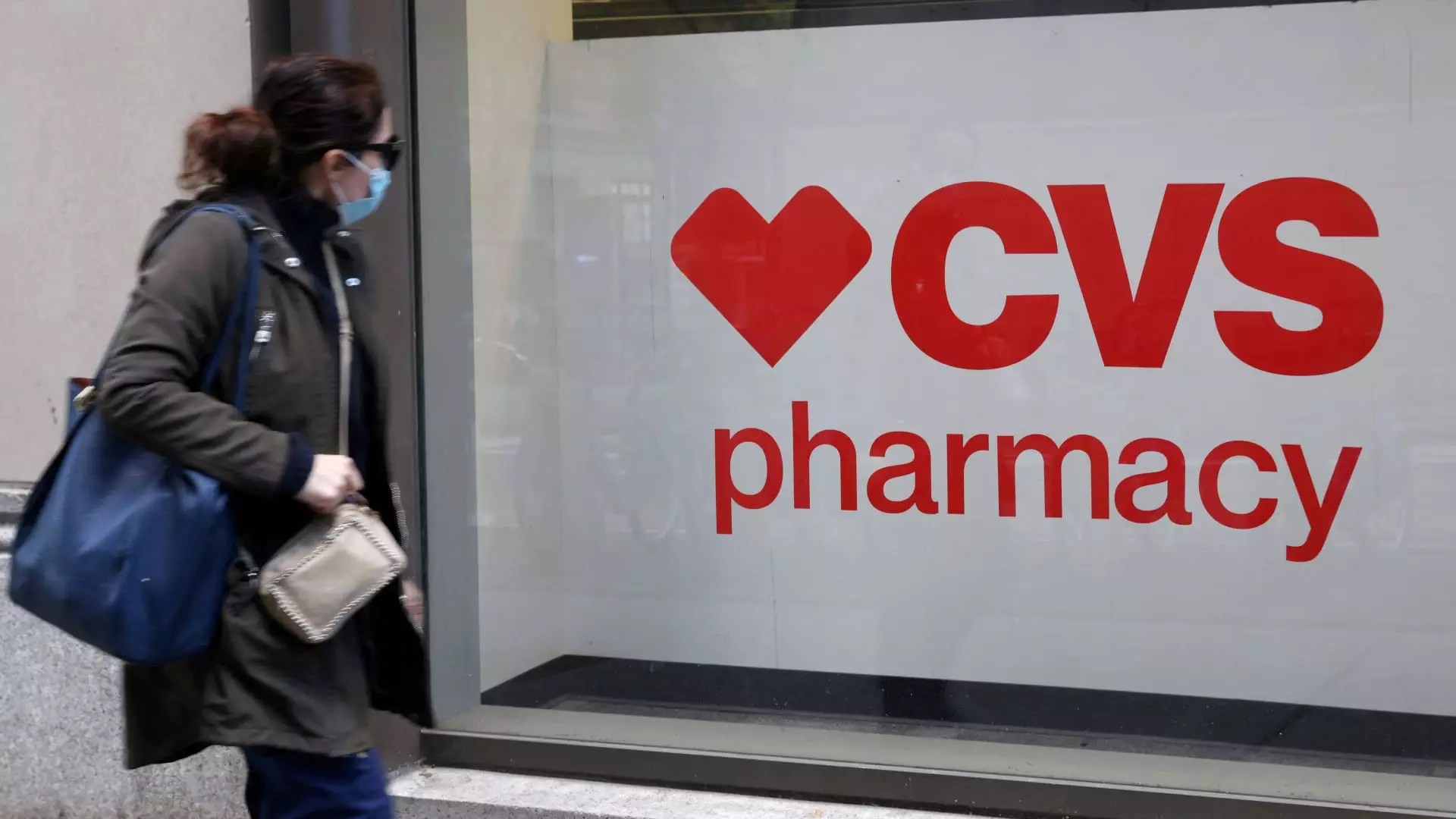CVS Health recently reported its third-quarter financial results, showcasing a mix of challenges and opportunities as the chain navigates through a turbulent financial landscape. Under the new leadership of CEO David Joyner, who is stepping into a role marred by previous performance issues, CVS faces mounting pressures primarily due to elevated medical costs. This article delves into the implications of these results, the strategies being deployed to regain investor confidence, and what the future might hold for the health care giant.
CVS Health’s latest earnings reveal a stark contrast between revenue growth and dwindling profits. Although the company posted a revenue of $95.43 billion for the third quarter—marking a 6.3% increase from the previous year—its net income fell dramatically to $71 million, compared to $2.27 billion a year ago. The decline in profitability primarily stems from the increased financial burden in its health insurance unit, Aetna, which has seen a rise in medical costs as patients return for procedures that were postponed during the COVID-19 pandemic.
The company’s adjusted earnings per share of $1.09 significantly missed Wall Street expectations of $1.51, raising concerns about its ability to forecast accurately in such a challenging environment. CVS attributed this downturn to a spike in claim rates and hospital utilization, reflecting broader trends in the healthcare sector. Joyner acknowledged that while the entire industry is grappling with higher utilization rates following the pandemic, CVS has been affected more acutely than its competitors, signaling a critical need for stability.
In light of these challenges, CVS has taken strategic steps, including restructuring efforts that involve significant layoffs and the closure of numerous retail sites. Joyner’s appointment as CEO comes at a time when restoring investor trust is imperative. He emphasized in his statements that establishing credibility is a top priority, insisting that any guidance offered should be realistic and rooted in measurable outcomes.
In a move to bolster leadership around healthcare services, CVS appointed Steve Nelson as president of Aetna. With a background as the former CEO of UnitedHealthcare, Nelson’s experience could be pivotal in steering the insurance segment back to profitability. Alongside him, CVS veteran Prem Shah was given an expanded role, overseeing critical areas such as retail pharmacy and healthcare delivery. The internal leadership reshuffle highlights CVS’s commitment to addressing its operational shortcomings, but it also illustrates the urgency underlying their strategies.
One of the crucial aspects of CVS Health’s financials that warrants attention is the impact of premium deficiency reserves. These reserves—estimated to account for a significant charge of $1.1 billion in the third quarter—represent anticipated losses if premiums do not suffice to cover future claims. Such liabilities impact immediate earnings but may lead to a favorable adjustment in future quarters as they are expected to be released, which could provide a temporary reprieve for CVS’s financial outlook.
Nevertheless, investors remain cautious, especially after the company has delivered three consecutive quarters of lowered guidance. The combined burden of restructuring costs and loss reserves raises questions about CVS’s long-term financial health, necessitating a clear communication strategy going forward.
To navigate these turbulent waters, CVS Health must focus on cost containment while simultaneously enhancing its core business lines. The surge in prescription volume in its pharmacy and consumer wellness division—ranking high with a 27.3% market share—is a promising indicator, but it is countered by the downward pressure on reimbursement rates and an evolving retail landscape.
Additionally, CVS’s health services segment, which includes its pharmacy benefits manager, Caremark, experienced a notable decline in claim processing volumes. Addressing operational inefficiencies within this segment will be paramount to offsetting pressures from rising medical expenses and enhancing profitability. The anticipated changes in care delivery models and the introduction of generic drugs may also provide avenues for improving margins in this highly competitive space.
As CVS Health embarks on this journey under new leadership, the mixed third-quarter results serve as a wake-up call. While the company demonstrates revenue growth in some sectors, the accompanying rise in costs and reduced profitability is a clear indication of the tough road ahead. For CVS to regain its status as a trusted player in the healthcare market, it must prioritize strategic realignment, enhance operational efficiencies, and continue to foster transparency with its investors. The path to recovery is fraught with challenges, but with a recalibrated approach and robust oversight, CVS Health may yet emerge stronger from this turbulent phase.

